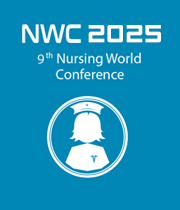Title : Human trafficking in our schools
Abstract:
In the year 2019, there were 22,326 trafficking victims identified and 5,359 were under the age of 18 according to the Polaris Project (2020). Many of these victims were school-aged children. As we are becoming more familiar with the terms human trafficking and child trafficking, it is now time to take it to another level and learn how to identify these children so we can stop trafficking. Human trafficking does not discriminate and is involved in every community, school, socioeconomic group, and student demographic. Inducing a child under age 18 to perform a commercial sex act, with or without force, fraud, or coercion, is human trafficking. There are no exceptions. Children can never be responsible for or complicit in their own abuse. Any type of trafficking, but especially sex trafficking, can have devastating consequences for children, including long-lasting physical and psychological trauma, sexually transmitted infections, substance use disorders, unplanned pregnancy, and mental health problems, such as depression and suicidal ideation. While everyone experiences trauma differently, survivors’ stories share the common threads of manipulation and abuse. Children can be trafficked by peers, family members, romantic partners, acquaintances, and strangers. Traffickers target children and adolescents for grooming, often over an extended period of time. Traffickers target vulnerable children, secure their trust, fulfill their needs, isolate them from potential support, and eventually exert total control over them, all the while working to normalize the abuse. Recruitment can and does occur everywhere—in school; at home, malls, sporting events, and parties; and in shelters and detention facilities—and is conducted both in person and online, where traffickers lure young people with the offer of friendship, romance, or jobs. Schools and their staff are at a unique position to help combat this issue because they are often seeing these children every week. By educating our schools and their staff to identify red flags of human trafficking, it can lead to a decrease in victims. We all need to work together to combat this global epidemic.


